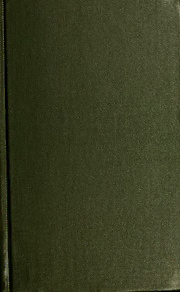
Index to the prerogative wills of Ireland, 1536-1810 PDF
Preview Index to the prerogative wills of Ireland, 1536-1810
MMi ALLENCOUNTYPUBLICLIBRARY GC REYNOIj GENEAlJ ""iH^ 00668 8433" 941.5004 V66IN 3*& tx (pmo^tm TBiffs of Jrefano, 1536-1810. Jti&e* TO THE Wiffe (prerogative of Jrefcmfc, 1536—1810. EDITED BY ARTHUR SIR VICARS, F.S.A., ULSTER KING OF ARMS. DUBLIN: EDWARD PONSONBY, GRAFTON STREET. 116, 1897. AHen County Public library Wayne, Indiana Ft. Dublin : Piukted at The University Press, ByPonsonby and Weldrick. •70804*71 PREFACE A1MONGST the various sources of information open to the genealogist, it is generally admitted that Wills occupy the most important place. From a testamentary document, it is often possible to obtain particulars of three or four genera- tions of a family, besides a general insight into the extent of civilization and social position of our ancestors. Not only can we see the autograph of the testator, but often ascertain the armorial bearings of the family, since it was customary in former days for testators not only to sign, but also to seal, their wills. By means of the armorial bearings on seals attached to wills — one often obtains important clues to family descent not to speak of the value of information about lands and residences, places of burial, and other useful matter mentioned in such documents. The wills in Ireland may be said to consist of two classes, Prerogative and Diocesan. Those proved in the Prerogative Court are the most important, containing, as they do, testamen- tary devises from all parts of Ireland, and generally referring to the more important members of the community. They com- mence in 1536, and continue to 1858. Before 1857, wills used to be proved in the Consistorial Court, that is, the Court of the Bishop or Ordinary, within whose diocese or jurisdiction the testator dwelt but if there ; were effects to the value of ^5 (called bona notabilia), in two or more dioceses, the will had to be proved in the Pre- rogative Court of the Archbishop of Armagh, Primate of all Ireland, which was the Supreme Court in matters of which the ecclesiastical jurisdiction had cognisance. b vi Preface. The right of appointing a Judge or Commissary of the Pre- rogative Court in Ireland was originally vested in the Crown. By Letters Patent of 20 James I., the Archbishop ofArmagh and his successors were appointed the Judges of the Court, and later were empowered (Letters Patent, 20 Charles I.) to appoint a Commissary of the Prerogative Court, instead of being obliged, as formerly, to act in person. By the Act 7 & 8 George IV., c. 44, the office of Judge of the Court of Faculties, which dealt with Ecclesiastical causes, was consolidated with that of Judge of the Prerogative Court. The jurisdiction of the various Consistorial Courts in Ireland was confined to dealing with the assets of deceased persons who were domiciled in the Diocese, and who had no personal estate in any other Diocese in the Kingdom and in the case of ; a person dying out of Ireland, who left personal estate in only one Diocese, the Consistorial Court of that Diocese had jurisdic- tion over such estate. Up to 1816 the Court of Prerogative used to be held in the private residence of the judge, and sometimes in the Chapter Room of S. Patrick's Cathedral, and the original wills and records were not kept in any certain or secure custody, no proper building having been provided for these purposes. Owing chiefly to the efforts ofDr. Radcliff, who was appointed Judge of the Court in 1816, the Court of Prerogative was estab- lished in Henrietta-street, Dublin, and the original wills and other records were then transferred there, where they remained until removed to the Public Record Office, their present de- pository. By the Court of Probate Act, 1857 (20 & 21 Vict. c. 77), the jurisdiction of the antient Ecclesiastical Courts, and of the few surviving courts of exempt jurisdiction, was abolished, and transferred to the Probate Court, constituted a separate Division of the High Court by the Judicature Act, 1873; and further amalgamated with the Queen's Bench Division, a par- ticular Judge being assigned to deal with testamentary matters, under the Judicature Act, 1897. Not till the year 1810, when the Irish Record Commission
